A 1925 dime’s value depends on mint mark, condition, and errors. The 1925-D (Denver) is most valuable, with uncirculated specimens fetching $275-$3,450+, while circulated examples range $8-$350. The 1925-S (San Francisco) uncirculated coins value between $6.50-$2,700. Philadelphia-minted dimes (no mint mark) are most common and worth less than D or S versions. “Full Bands” designation significantly increases value across all mint marks. While the 1925 series lacks famous errors like the 1942/1 overdate, coins with off-center strikes, die cracks, or double dies command premium prices. Error coins are rare but substantially boost value when authenticated.
The 1925 Mercury dime represents a fascinating chapter in American numismatics, where subtle differences in mint marks can mean the difference between a few dollars and several thousand. Whether you’ve inherited a collection or found one in an old drawer, understanding how Denver, San Francisco, and Philadelphia strikes differ in value could turn a casual discovery into a profitable find. The key lies in knowing what to look for and where these coins stand in today’s market.
Understanding the 1925 Mercury Dime Series
The 1925 Mercury dime, officially known as the Winged Liberty Head dime, was minted at three facilities: Philadelphia (no mint mark), Denver (D), and San Francisco (S). The mint mark appears on the reverse side, just to the left of the fasces bundle. Adolf A. Weinman designed this iconic coin, featuring Liberty wearing a winged cap symbolizing freedom of thought.
Production numbers varied significantly across the three mints in 1925. Philadelphia struck 25,610,000 pieces, making it the most common. Denver produced 6,828,000 dimes, while San Francisco minted 5,850,000. These mintage figures directly impact today’s values, with lower production generally correlating with higher prices in uncirculated grades.
The coin’s condition grade follows the Sheldon Scale, ranging from Good (G-4) for heavily worn pieces to Mint State (MS-60 through MS-70) for uncirculated examples. A critical factor for Mercury dimes is the “Full Bands” (FB) designation, which refers to complete horizontal lines visible on the fasces bands on the reverse. This detail significantly increases a coin’s value.
1925-D Dime: The Denver Premium
The 1925-D represents the most valuable regular strike among the three mints. Circulated examples in Good to Fine condition typically trade between $8 and $15, while Very Fine specimens command $25 to $45. Extremely Fine grades push values into the $90 to $150 range, already showing substantial premiums over face value.
Uncirculated specimens tell a different story entirely. An MS-60 grade 1925-D starts around $275, while MS-63 examples fetch approximately $425 to $550. The real jump occurs at MS-65, where prices range from $1,200 to $1,800. According to NGC Coin Explorer data, MS-66 specimens have sold for $2,800 to $3,450 at major auctions.
The Full Bands designation creates even steeper premiums. A 1925-D graded MS-65 FB can exceed $5,000, while MS-66 FB examples have reached $8,500 at Heritage Auctions sales. The Denver mint strike often shows weaker details on the fasces bands, making FB examples particularly scarce and desirable among collectors.
| Grade | Standard Price | Full Bands Price |
|---|---|---|
| MS-60 | $275 | $850 |
| MS-63 | $550 | $1,600 |
| MS-65 | $1,500 | $5,200 |
| MS-66 | $3,200 | $8,500 |
1925-S Dime: San Francisco Strikes
The 1925-S dime occupies a middle position in the value hierarchy. Circulated pieces in Good condition start around $3.50, with Fine examples bringing $6 to $10. Very Fine grades command $18 to $30, while Extremely Fine specimens trade for $50 to $85.
In uncirculated condition, the 1925-S shows respectable values but doesn’t match Denver’s premium. MS-60 grades begin at approximately $165, with MS-63 examples selling for $275 to $400. At MS-65, expect prices between $650 and $950. Top-grade MS-66 specimens reach $1,400 to $2,000, according to Greysheet pricing data.
Full Bands examples again command significant premiums. An MS-65 FB 1925-S typically sells for $1,800 to $2,700, while MS-66 FB coins can exceed $4,500. The San Francisco mint generally produced better strikes than Denver, making FB examples more available but still highly sought after by serious collectors.
1925 No Mint Mark: Philadelphia Production
Philadelphia’s high mintage makes the 1925 without mint mark the most affordable variety. Circulated pieces in Good to Very Fine condition rarely exceed $2.50 to $8, making them excellent starter coins for new collectors. Even Extremely Fine examples typically stay under $25.
Uncirculated specimens remain accessible compared to branch mint issues. MS-60 grades start around $45, while MS-63 examples trade for $85 to $130. At MS-65, prices range from $185 to $325. MS-66 specimens command $450 to $750, still well below Denver counterparts of equal grade.
The Full Bands designation creates the most dramatic value increase for Philadelphia strikes. While an MS-65 standard coin might bring $250, an MS-65 FB can sell for $850 to $1,400. MS-66 FB examples have reached $2,800 at major auctions. Despite the high mintage, truly well-struck Philadelphia dimes with complete fasces bands remain challenging to locate.
Notable Errors and Varieties Worth Searching For
While the 1925 dime series lacks the famous errors of later dates like the 1942/1 overdate, several valuable errors exist. Off-center strikes are the most commonly encountered error type. Minor off-center strikes showing 5-10% displacement might add $50 to $150 to a coin’s value, while dramatic 30-50% off-center strikes with full dates visible can command $500 to $1,500.
Die cracks appear on various 1925 dimes, particularly late-die-state Denver issues. Most die cracks add modest premiums of $20 to $75, but significant cracks through major design elements can increase values by $150 to $300. A major cud error, where a piece of the die breaks away leaving a blank raised area, can bring $300 to $800 depending on size and location.
Doubled die varieties exist for 1925, though none are as dramatic as later years. Minor doubling on the date or “LIBERTY” inscription might add $75 to $200 for authenticated examples. Repunched mint marks on Denver and San Francisco issues are collectible varieties, typically adding $30 to $100 to standard values when clearly visible.
Strike-through errors, where foreign material was pressed into the coin during minting, occasionally appear on 1925 dimes. Depending on the size and clarity of the strike-through, values range from $100 for minor examples to $500 for dramatic, full-feature strike-throughs. Authentication by PCGS or NGC is essential for errors, as many apparent errors are actually post-mint damage.
Grading Factors That Maximize Your 1925 Dime’s Value
Beyond the mint mark and error considerations, proper grading assessment determines the difference between a $50 coin and a $5,000 specimen. Focus on Liberty’s cheek and jaw area first—wear appears here earliest on circulated examples. On uncirculated coins, examine these areas under magnification for contact marks that lower the grade from MS-65 to MS-63.
The reverse fasces bands are critical. Count the horizontal lines carefully—Full Bands designation requires complete separation of all central bands. Even slight merging at one point disqualifies the FB designation, potentially reducing value by 50-70% in higher grades. Use a 10x magnifier under good lighting to make this assessment accurately.
Original luster preservation significantly impacts grading. Coins with full mint luster, exhibiting a frosty or satiny appearance, grade higher than those with diminished luster even if wear is minimal. Avoid cleaning coins, as this removes original luster and typically reduces value by 40-60%. Professional grading services can identify cleaned coins, which receive “Details” grades rather than numeric grades.
Toning patterns affect desirability and value. Attractive, naturally acquired toning in blues, golds, and rose hues can increase values by 10-30% for collectors who prefer toned coins. However, artificial or unattractive toning (dark, blotchy, or green colors) reduces desirability. When in doubt about a valuable coin, submit it to PCGS or NGC for authentication and grading before selling.
Building Your Investment Strategy Around 1925 Dimes
For collectors working with limited budgets, Philadelphia strikes in MS-63 to MS-64 grades offer the best entry point into quality Mercury dimes. At $100 to $200, these coins provide attractive eye appeal without the premiums attached to branch mint issues. Upgrading to FB examples when budget allows creates a more valuable long-term collection.
Serious collectors should focus on 1925-D specimens in MS-65 or better grades, particularly those with Full Bands designation. While requiring $1,500 to $5,000 investments, these coins have shown steady appreciation over the past two decades. Heritage Auctions data indicates MS-65 FB examples have increased approximately 85% in value since 2010.
Error collectors can find opportunities across all three mints. Dramatic off-center strikes remain undervalued compared to other error types, offering potential appreciation. Focus on errors with full dates visible and significant displacement percentages. Authenticated errors from respected grading services protect your investment and ensure liquidity when selling.
Whether you’re building a complete Mercury dime set or focusing specifically on 1925 issues, understanding these value factors transforms collecting from casual hobby to informed investment. The difference between mint marks, the importance of Full Bands designation, and the premium attached to authenticated errors all contribute to maximizing the worth of these nearly century-old pieces of American history. Start by examining any 1925 dimes you currently own with these criteria in mind—you might discover your coin is worth considerably more than ten cents.
You may be interested:
- 1859 Indian Head Penny Coin Value Complete Errors List And No Mint Mark Worth Guide For Collectors
- 1911 V Nickel Coin Value Guide Complete Errors List And No Mint Mark Worth Today
- 1902 Dime Coin Value Complete Errors List With O S And No Mint Mark Worth Guide
- 1788 Quarter Coin Value Complete Guide Errors List And D S P Mint Mark Worth Revealed
- 1776 To 1976 Bicentennial Half Dollar Coin Value Complete Errors List And What Your D S And No Mint Mark Coins Are Actually Worth
- 1990 Penny Coin Value Errors List How D S And No Mint Mark Pennies Are Worth Thousands Of Dollars

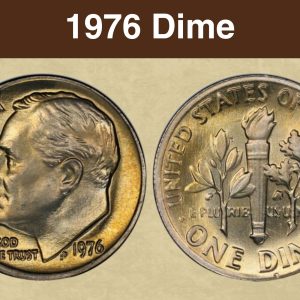
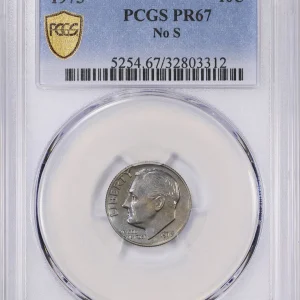
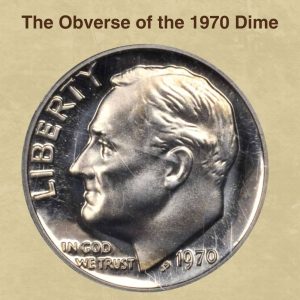
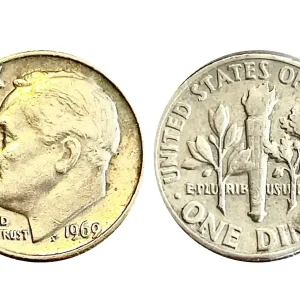
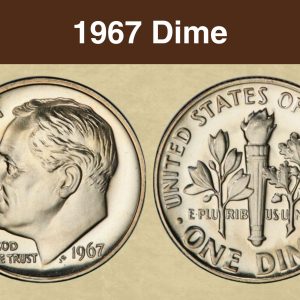
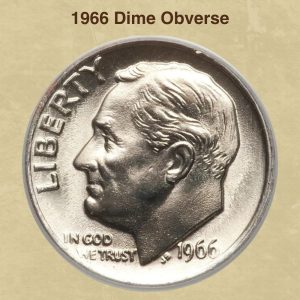
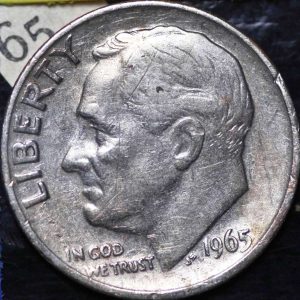
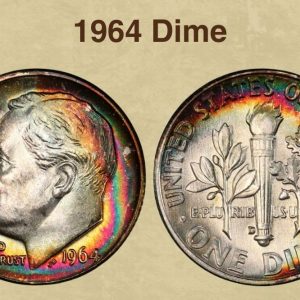
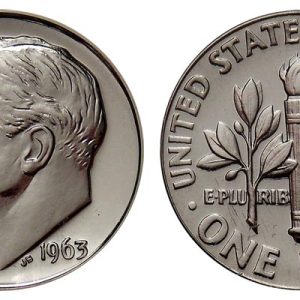
How much is a 1925 dime worth with no mint mark?
And you can expect them to hit a value of $315. Of course with a full band’s designation these prices go higher ms62 and MS651925P dimes can cost $15.
How much is a 1925-S Mercury dime worth?
A 1925-S Mercury dime’s value ranges from a few dollars for heavily circulated coins to thousands for uncirculated examples in high grades or with “full bands”. In circulated condition, the value is typically between $3 and $225, but a coin in mint state (uncirculated) can be worth significantly more. For example, a mint state coin with a “full bands” designation is much rarer and commands a premium.
What errors to look for on dimes?
When looking for valuable dime errors, check for coins with a double die obverse, where features like the date or motto are doubled, as well as errors in the striking process, such as an off-center strike or a broadstrike where the collar is missing. Other errors include missing or clipped planchets, missing clad layers, or striking through debris like cloth (a strikethrough error ).
What is the most wanted Mercury dime?
The most sought-after Mercury dimes are the 1916-D, the 1921, the 1921-D, and the 1942/1 overdate varieties. Other key dates include the 1926-S, 1919-D, and 1945. Value depends heavily on a coin’s condition, with higher-grade coins commanding significantly higher prices.